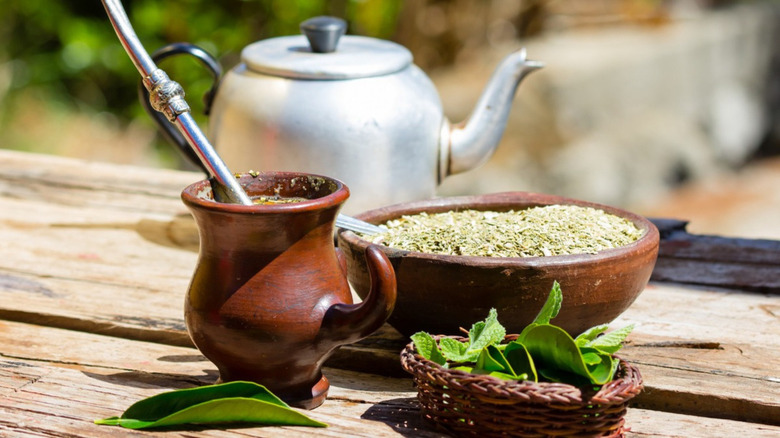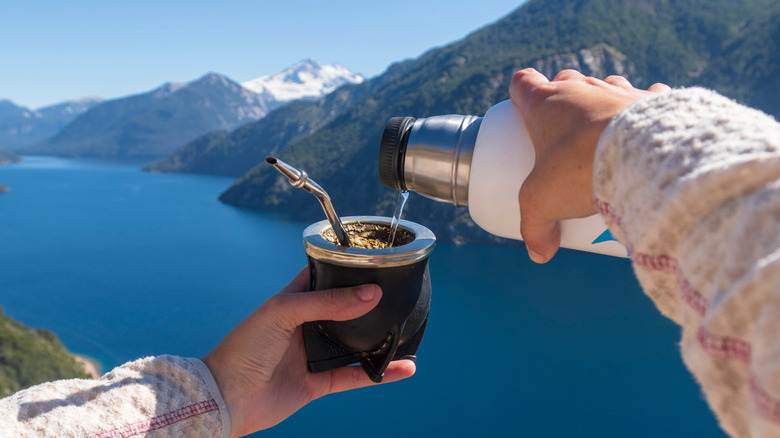What Drinking Yerba Mate Is Actually Like
In our ever-present quest for caffeine to carry us through tired mornings and the struggle bus that is the 2 p.m. slump, coffee is the magic elixir of choice in the United States (if you aren't drinking tea instead). Whether you're brewing it at home or heading to a coffee shop to grab a steaming cup of your favorite gourmet roast each morning, the average American drinks an average of three cups of coffee each day to keep chugging along, according to the National Coffee Association.
But instead of coffee, South America's preferred caffeine-infused drink is yerba mate. Mate has a rich history that's rooted in tradition, which has cemented its place as the national drink of Argentina and can be enjoyed at any time of day.
Compared to the 66% of Americans who drink coffee every day, a whopping 92% of Argentinians drink yerba mate on a daily basis. Mate bars are just as common there as coffee shops are in the United States. And as with coffee, there are various flavors that you can choose from. Dating back to pre-Columbian times, the Guarani people of Uruguay began cultivating, drying, and infusing the leaves of the Ilex paraguariensis plant in water to make yerba mate. The drink rose in popularity and soon became the country's main export before the rest of South America started growing their own crops as well. So, what makes this beloved South American staple so good?
Yerba mate is an acquired taste
If you're an avid coffee drinker, you've likely perfected your own delicious formula for enjoying your coffee. Through much trial and error, you've calculated the precise amounts of sugar, cream, and other flavor enhancers needed to adjust the taste to your liking. It's a similar process with yerba mate, which is an acquired taste in the same way coffee is.
Earthy and quite bitter, this strong drink might require some getting used to. Ashleigh Parsons, L.A. restaurant co-owner and former Argentina resident, explained to Food & Wine, "It's very expressive, like this euphoric experience. It can feel very trippy. The caffeine in it can really give you this high." Caffeine is a stimulant after all, so that makes total sense. If needed, sweeten it the same way you would a cup of joe using sugar, milk, creamer, or a dollop of honey. Locals drink it plain, so be prepared for strange looks if you need to dump sweetener in it while visiting South America.
Yerba mate is traditionally sipped out of an ornate cup with a straw, or bombilla, that has a filter at the end to catch all the leaves as you drink it, per the South America Backpacker. Many mate drinkers have their own special, beautifully designed set to drink from whenever they please. If you prefer the taste and variety of tea over coffee for all your caffeine needs, you may want to give yerba mate a go.

